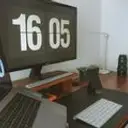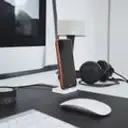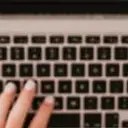Research has shown time and again that, far from a valuable skill, multitasking is actually a seriously unhealthy habit. From lowering IQ to minor brain damage, frequent multitasking reduces productivity at best, and impairs brain function at worst. So why do so many of us insist on equating high achievement with chipping away at a million different tasks at once? Perhaps it’s time to give single-tasking a try and see how kicking the multitasking habit can make you happier, healthier, and more productive. From browser tabs to time tracking, here are six practical ways to start breaking your multitask addiction.
Spend time like money: make a chrono-budget
If you experienced a financial penalty for each glance at Facebook, Youtube, or even text messages, would it change your behavior at work? If the answer is yes, then it’s time to start thinking in terms of a chrono-budget. We allocate specific amounts of money for specific purposes, and work hard to avoid waste. But with time, perhaps an even more precious resource, we allow ourselves to spend it on whatever appears in front of us. Chrono-budget is just a fancy term for a daily schedule, but truly planning and prioritizing your time as you do your money will significant reduce waste and improve productivity.
Track time
Time tracking is related to the chrono-budget concept. We track our spending to discover how best to save and use money. Likewise, we should track our time to find ways to maximize productivity. Time tracking is like auditing time costs of our activities. You wouldn’t make a budget or even a purchase without knowing how much something cost, would you? Then it makes sense to track time costs in order to make good estimates on future time expenditures, and be able to plan accordingly.
Turn off notifications
Mobile and desktop notifications are the multitasker’s best friend. Instant updates on everything from email to social media and birthday alerts make for days filled with tasks in competition for our attention. But think about it: how often do these things really require immediate attention? Not only are notifications distracting, but they create anxiety – a sense that every email and tweet is urgent and demanding immediate response, when really it isn’t. Don’t let your environment control you – get into the single-tasking zone by turning off all notifications when you want to be productive.
Close browser tabs not related to your current task
Distracting browser tabs affect single-tasking productivity much like notifications do. However they’re more insidious because they’re often permanent fixtures, sitting right there next to productive tabs. This makes it all too easy to casually click over to Instagram or email, just to see if anything has changed. As with notifications, the danger here is loss of focus. Research shows that a 3-second distraction doubles errors on tasks that require focus, and a 4.4-second distraction quadruples errors. Instead cultivating a browser maxed out with tabs, practice single-tasking by closing every tab that doesn’t relate to the task at hand. Youtube and Facebook aren’t going anywhere. And for everything else: that’s why bookmarks were created.
Schedule specific time to check your email
As important as email is for business, it can also be one of the biggest productivity killers. There is no commandment that Thou shalt respond to all emails immediately. But that’s how many of us behave. In fact, recent research shows that the average office worker checks email 30 times per hour. That’s once every two minutes! Don’t let email keep you from single-tasking productivity gains. Instead, close your inbox and schedule 1 – 2 times per day (perhaps at the beginning and end of the day) to check and respond to emails. This is a major single-tasking step toward protecting the majority of your time for important things, and containing distracting, urgent matters to times when they can’t interfere with productivity.
![Hone your focus: Practice single-tasking [6 Tips]](/static/image?src=https%3A%2F%2Fcdnblog.unrubble.com%2Fpayload-unrubble-images%2Ff197e228-eaaa-47f3-b026-500a68368c28_large.jpg&width=1440&height=540&fit=cover&position=center&quality=65&compressionLevel=9&loop=0&delay=100&crop=null&contentType=image%2Fwebp)





